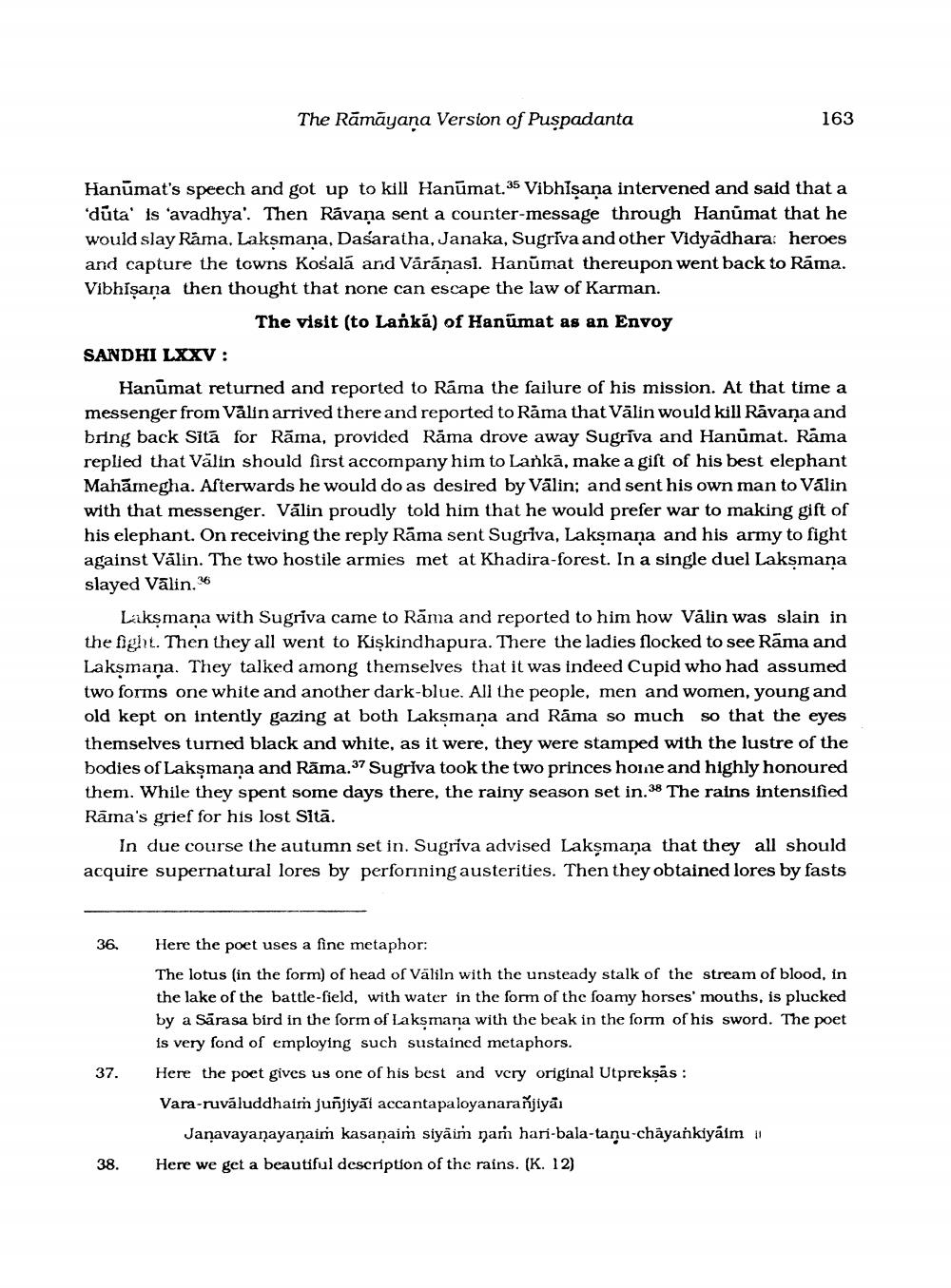________________
The Rāmāyana Version of Puşpadanta
163
Hanūmat's speech and got up to kill Hanumat.35 Vibhisana intervened and said that a dúta' is 'avadhya'. Then Ravana sent a counter-message through Hanumat that he would slay Rama, Laksmana, Dasaratha, Janaka, Sugriva and other Vidyadhara: heroes and capture the towns Kosala and Váránasi. Hanūmat thereupon went back to Rama. Vibhişana then thought that none can escape the law of Karman.
The visit (to Lanká) of Hanumat as an Envoy SANDHI LXXV:
Hanumat returned and reported to Rama the failure of his mission. At that time a messenger from Vălin arrived there and reported to Rama that Välin would kill Rāvana and bring back Sitā for Rāma, provided Rāma drove away Sugriva and Hanumat. Rama replied that Valin should first accompany him to Lankā, make a gift of his best elephant Mahāmegha. Afterwards he would do as desired by Välin; and sent his own man to Válin with that messenger. Vălin proudly told him that he would prefer war to making gift of his elephant. On receiving the reply Rāma sent Sugriva, Laksmana and his army to fight against Välin. The two hostile armies met at Khadira-forest. In a single duel Laksmana slayed Vālin.
Laksmana with Sugriva came to Rama and reported to him how Välin was slain in the fight. Then they all went to Kişkindhapura. There the ladies flocked to see Rāma and Lakşmaņa. They talked among themselves that it was indeed Cupid who had assumed two forms one white and another dark-blue. All the people, men and women, young and old kept on intently gazing at both Laksmana and Rama so much so that the eyes themselves turned black and white, as it were, they were stamped with the lustre of the bodies of Laksmana and Rāma.37 Sugriva took the two princes home and highly honoured them. While they spent some days there, the rainy season set in.38 The rains intensified Rāma's grief for his lost Sitā.
In due course the autumn set in. Sugriva advised Lakşmaņa that they all should acquire supernatural lores by perforining austerities. Then they obtained lores by fasts
36.
Here the poet uses a fine metaphor: The lotus (in the form) of head of Väliln with the unsteady stalk of the stream of blood, in the lake of the battle-field, with water in the form of the foamy horses' mouths, is plucked by a Sārasa bird in the form of Laksmana with the beak in the form of his sword. The poet is very fond of employing such sustained metaphors. Here the poet gives us one of his best and very original Utprekşās : Vara-ruvāluddhaiṁ junjiyai accantapaloyanarañjiyai
Janavayaņayaņaiṁ kasanaim siyāim ņam hari-bala-taņu-chāyankiyaimi Here we get a beautiful description of the rains. (K. 12)
37.
38.




